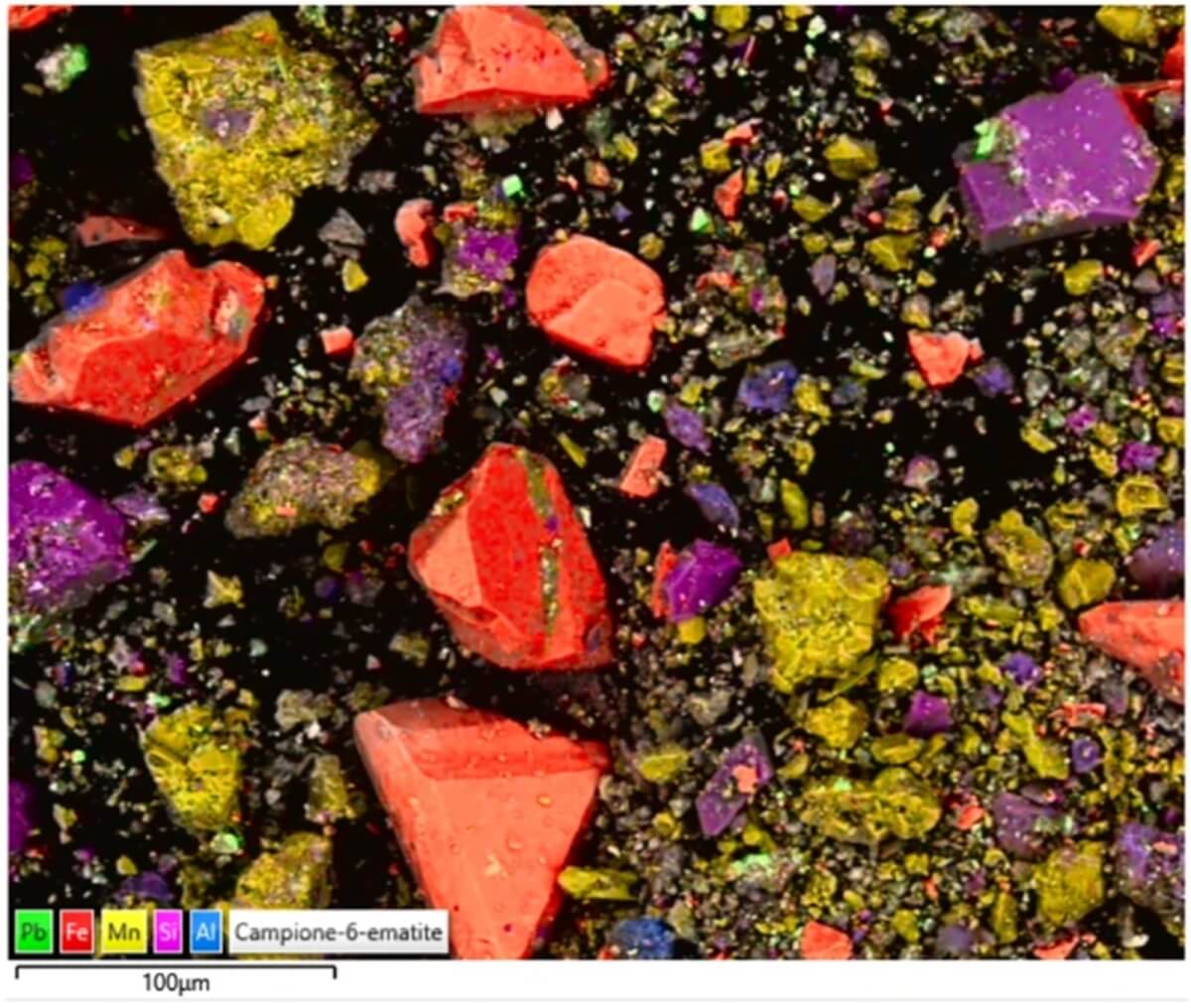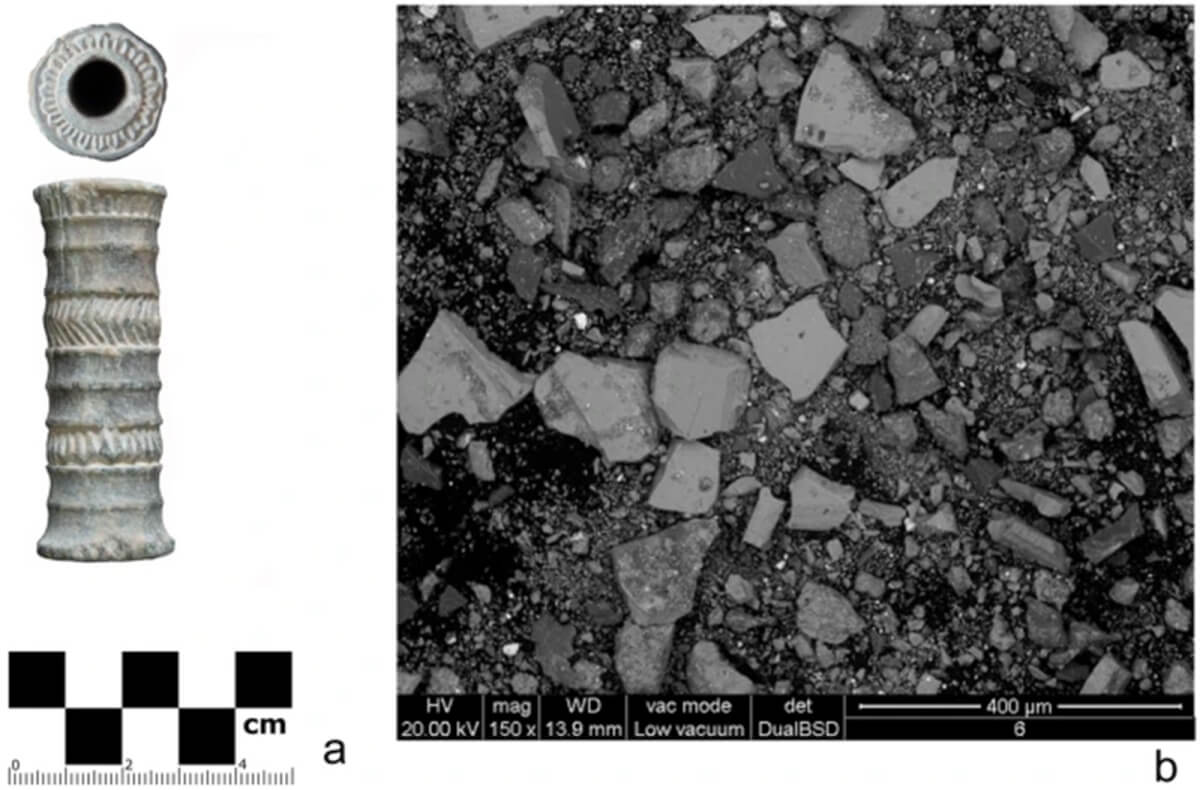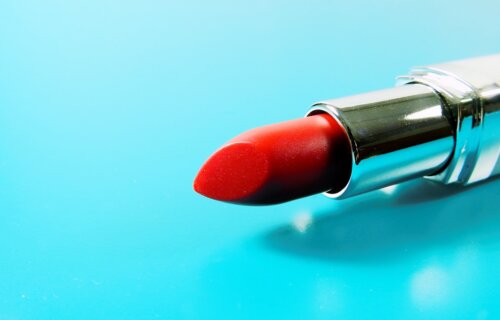PADUA, Italy — Red lipstick may have been the world’s first fashion statement nearly 4,000 years ago. In the heart of southeastern Iran, within the Jiroft region of Kerman province, archaeologists have unearthed a small, cylindrical vial made of chlorite-schist, a type of stone, that contained a substance strikingly similar to modern lipstick. This deep red cosmetic, dating back to the Bronze Age (around 3500–1800 BCE), offers a fascinating glimpse into the beauty practices of our ancestors and their innovative use of natural resources.
The study, conducted by researchers from Italy and Iran, utilized advanced techniques such as X-ray diffraction, scanning electron microscopy, and high-performance liquid chromatography to analyze the contents of this ancient vial. What they found was a sophisticated blend of minerals and organic substances, including hematite for its vibrant red color, manganite, and braunite for darkening, and traces of galena and anglesite. These minerals were mixed with plant-based waxes and possibly aromatic components, showcasing an early understanding of chemistry and cosmetology.

This ancient cosmetic’s composition bears a striking resemblance to contemporary lipsticks, which also combine colorants with waxes and oils to create a durable, moisturizing product. However, unlike some modern products that might include synthetic ingredients, this Bronze Age lip paint was made entirely from natural sources. The presence of plant-based (vegetal) waxes in the mixture indicates an early use of plant-based substances for their beneficial properties, a practice that aligns with today’s increasing preference for natural and organic beauty products.
Radiocarbon dating places the manufacture of this cosmetic in the early 2nd millennium BCE, making it one of the oldest known examples of lip coloring. This timing coincides with the flourishing of the Marḫaši civilization, a society that had sophisticated knowledge of metallurgy and chemistry. The cosmetic’s discovery in Jiroft, a region known for its rich deposits of metals and semi-precious stones, highlights the ancient people’s adeptness at utilizing their natural environment for beauty and perhaps ceremonial purposes.

The use of cosmetics in ancient times went beyond mere vanity. Researchers note that it was a form of social communication, a way to construct and convey identities within the community. The offering of cosmetic containers in burial contexts suggests that these beauty practices were deeply ingrained in the society’s culture, possibly carrying significance in beliefs about the afterlife or status in the present world. The choice of a semi-precious stone for the container, designed to mimic common materials but signify luxury, further indicates the role of cosmetics in displaying social hierarchy.
This remarkable find also sheds light on the health awareness of ancient civilizations. The minimal use of lead-based substances in the lip paint, in contrast to other cosmetic formulations of the time, might suggest an early recognition of lead’s harmful effects if ingested. This discernment speaks to a nuanced understanding of materials and their properties, an impressive feat for a civilization dating back thousands of years.
The findings are published in the journal Scientific Reports.
You might also be interested in:

I don’t like this article